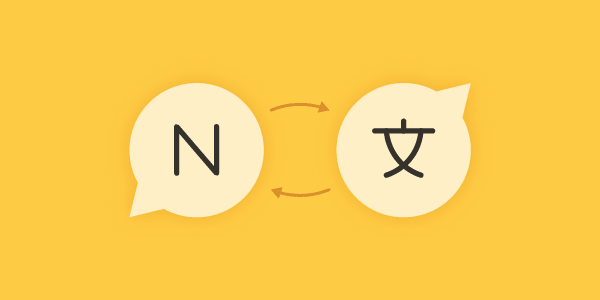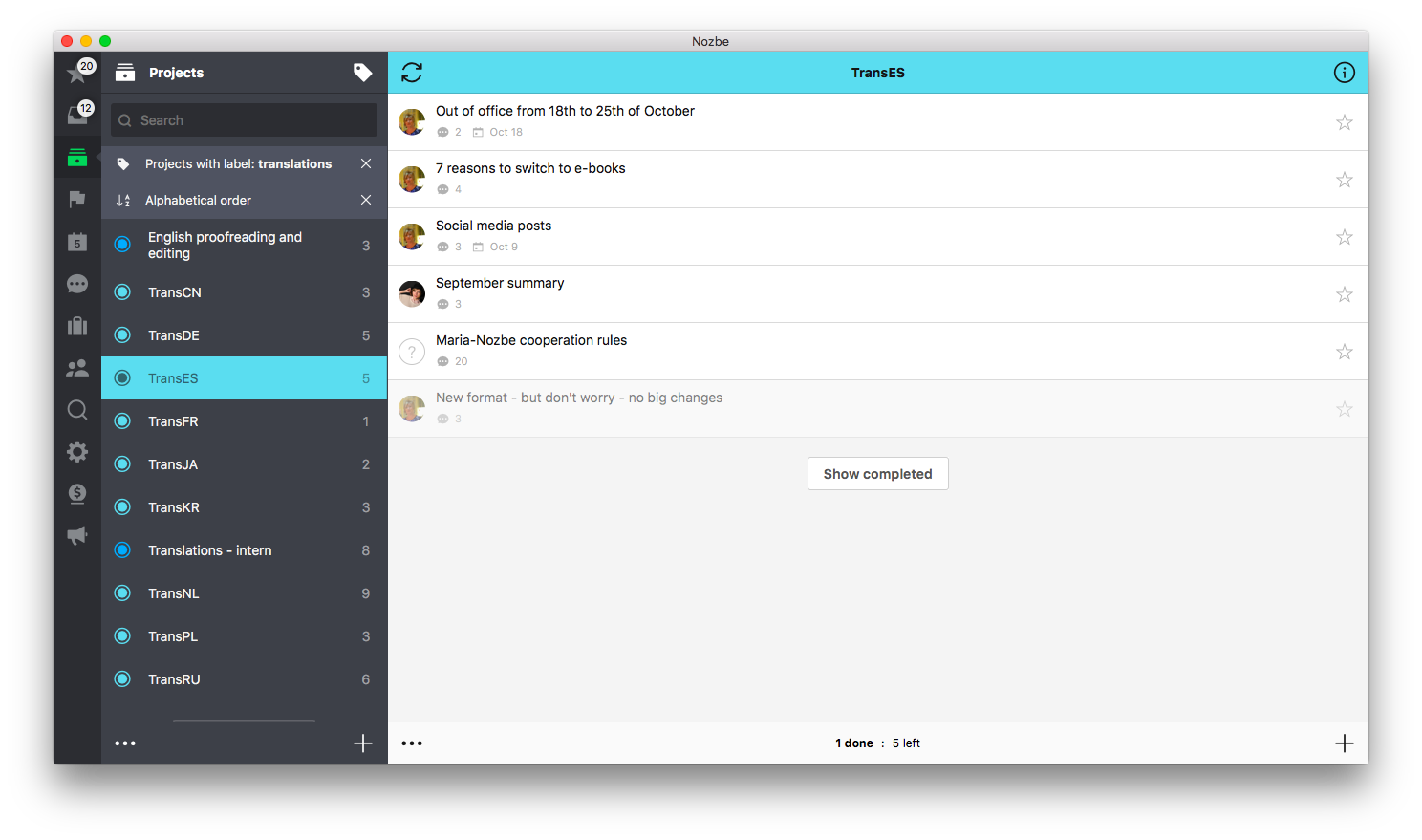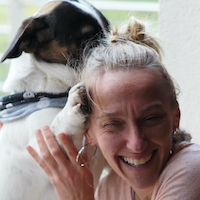
Nozbe supports many languages. We offer not only the app, but also on-boarding, educational materials, blog posts, email campaigns and newsletters in multiple languages. To get these materials all sorted and delivered on time, we set up a simple system for collaborating with contractors based all over the world.
Dedicated projects
We have separate projects for the translation of every language we support. Apart from the person who manages all the translation procedures, there are three more people in each of these projects:
- The freelance translator, of course :)
- The person from Nozbe customer support who speaks a given language
- One more person from the Nozbe marketing team who replaces the translation manager when she is away.
We agreed to have each project marked with the “translations” label and colored in blue so that we can filter them and easily spot them on the long list of projects.

Invitation to Nozbe
When we start working with a freelancer, we ask them to create a Nozbe account right away. They start with the 30-day free trial. When it ends, the translator either chooses the free plan valid for up to 5 projects or gets a Nozbe Solo plan from us as a gift if they want to work in Nozbe on their other professional and private projects.
Once we know the freelancer has opened their Nozbe account, we invite them to a translation project dedicated to their language. To do so, we enter the project infobar (“i”), type the translator’s email address and confirm the invitation.
You can learn more about inviting people to projects in Nozbe here.
First tasks
When the freelancer accepts the invitation in their application, we are all set up and ready to work.
The first task is usually a list of cooperation rules we agreed upon – every translator has their own professional code and expectations, as do we. We tend to keep this task in the project forever, delegated to “nobody” and waiting for any future updates.
Another task is created to allow for the introduction of all the people within the project. This task is completed after all the “hello"s and “nice-to-meet-you"s are done :)
Getting to work
At Nozbe, we write all texts in English, then we have them proofread to finally send them to the translators. When there is no time to wait for the proofreading, we send the “raw” text to translators and warn them not to be bothered by any typos or grammar mistakes in the English version.
To have a blog post translated, I usually follow these steps:
- I create a task in my Inbox first.
- I give it a name.
- In a comment, I explain (in English) what I expect.
- I also mention any important stuff like untypical formatting or new formatting elements that might mislead the translator.
- In the bottom line of my comment, I write: “Word count:” and give the exact number of words for future reference.
- I attach the text in English in .txt or .md format.
- I set a deadline, and…
- I clone the task as many times as many translations I need.

I then process the clones one by one and move them to appropriate projects and delegate them to specific translators, e.g., I choose the TransES project and delegate the task to Maria, our Spanish translator.
Communication
Most of the translators comment back in the task, saying they will have the translation back to us on time or just confirm with a “👍”.
When they complete their work, they upload the text file in the task and delegate it to the person from the Nozbe customer support. The Nozbe employee takes a look at the translated text to make sure all the Nozbe-related terms and descriptions are fine. Then the task comes back to the person who created it and who knows what to do with it next.
Settling accounts
At the end of each month, we prepare a summary of the translated words in every language. To do so, we go through the completed tasks and note all the word counts from the month’s assessments. Next, we create a task entitled “March Summary” or “September Summary,” for example, in the dedicated projects and write the total word count for every contractor, asking them to provide their invoices for the month. The invoices are passed to the accountant who transfers the money to all of the translators.
Wrapping it up
Although this article is quite long, the way we work with our contractors is pretty obvious and easy. Everything happens within Nozbe, so we can always go back to a task and check the word count or other details. All the attachments are available at any time because you can always access the completed tasks by using the “Show completed” button or the search option that also works for the completed items. We can draw people’s attention by @mentioning them in a comment or delegating the task to them. They will get a notification on their mobile device and respond as soon as they can.
Whenever a contractor plans a holiday, they can create a task with the dates and inform everyone involved in the translation process when they are going to be offline.
We use pretty much the same system for the proofreading and voice-over recording processes :)




